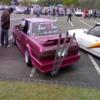M35 Turbo Upgrade.
Announcements
-
Similar Content
-
Latest Posts
-
yeah I have brown peeking out from in between some metal sheets close to the hood hinges. Strut towers look fine, even around the edges. some images https://imgur.com/a/brGt3Tu the one that looks the worst is the panel(s) going away right near the firewall on the passenger side, from underneath. Driver side does not look that bad.
-
By soviet_merlin · Posted
I presume you are talking about a C34? Have you seen the buyers guide? https://www.sau.com.au/forums/topic/92065-buyers-guide-the-nissan-c34-stagea/ It's what got me to sign up to the forums when I bought mine. What kind of insight are you after? Up front I'd probably suggest to not get tempted by the poverty-spec models. I can't imagine a RB20DE to be engaging to drive in a 1600kg car. -
yeah I try to be positive. Time will tell what becomes of it. Realistically my only other choice than to just deal with all the issues is to walk away and just sell it agai, at a loss. I know a fair bit about these cars and knew before buying. I will try to deal with the rusty spots without tearing apart the metalwork for now. Sooner or later I probably will have to bite the bullet and do (or ge done) the arguably worst job an a 33/34 Skyline.
-
I'm aware that you can sink endless amounts of money into an engine. I don't want that kind of engie though. My power goal is 500, maybe 600hp at the max. I can get by with the nearly stock engine that I have now for that purpose and if it does need a rebuild at some point I would choose longer lasting components instead of the most ridiculously hp-rated ones. And do all the essentials of course.
-





Recommended Posts
Create an account or sign in to comment
You need to be a member in order to leave a comment
Create an account
Sign up for a new account in our community. It's easy!
Register a new accountSign in
Already have an account? Sign in here.
Sign In Now